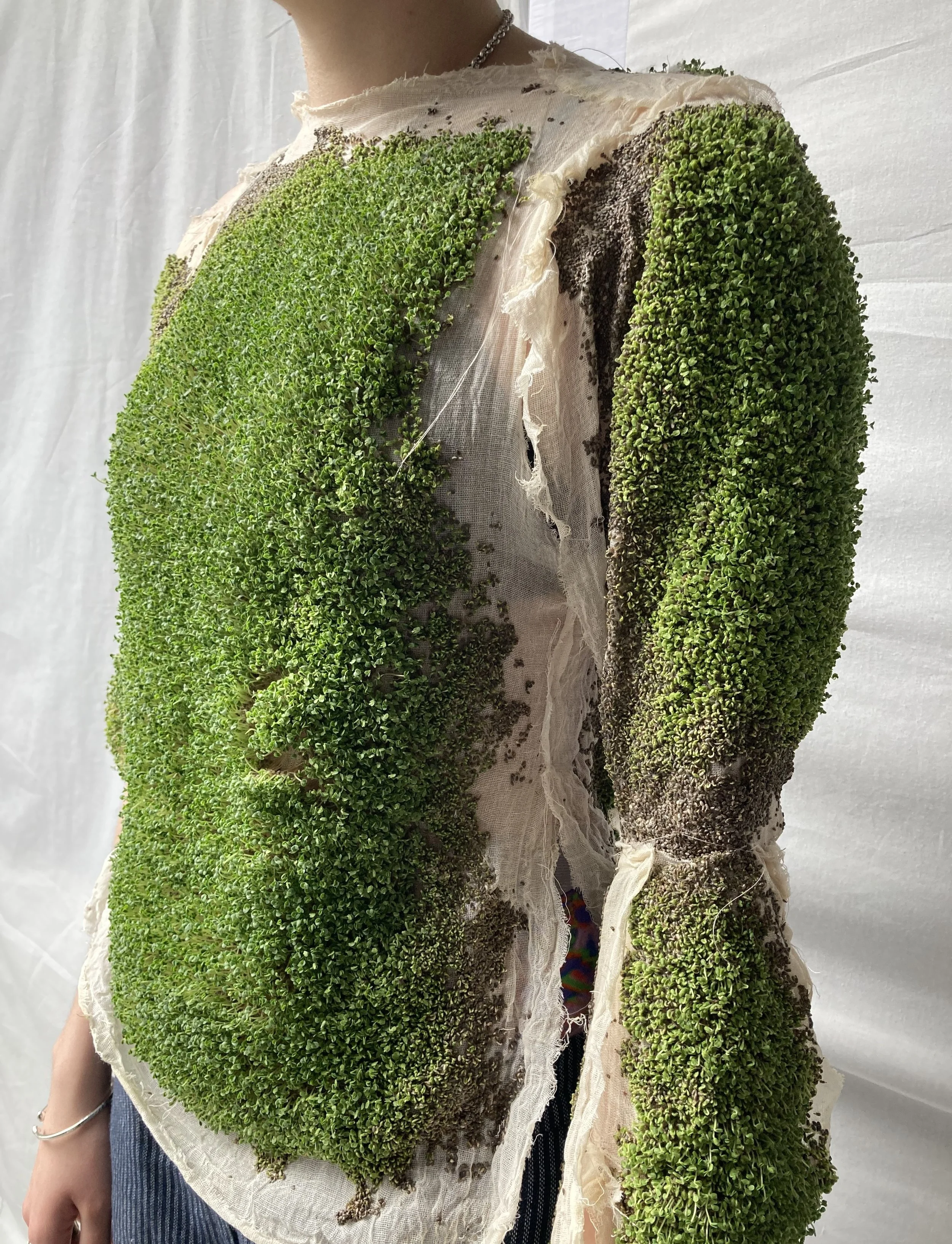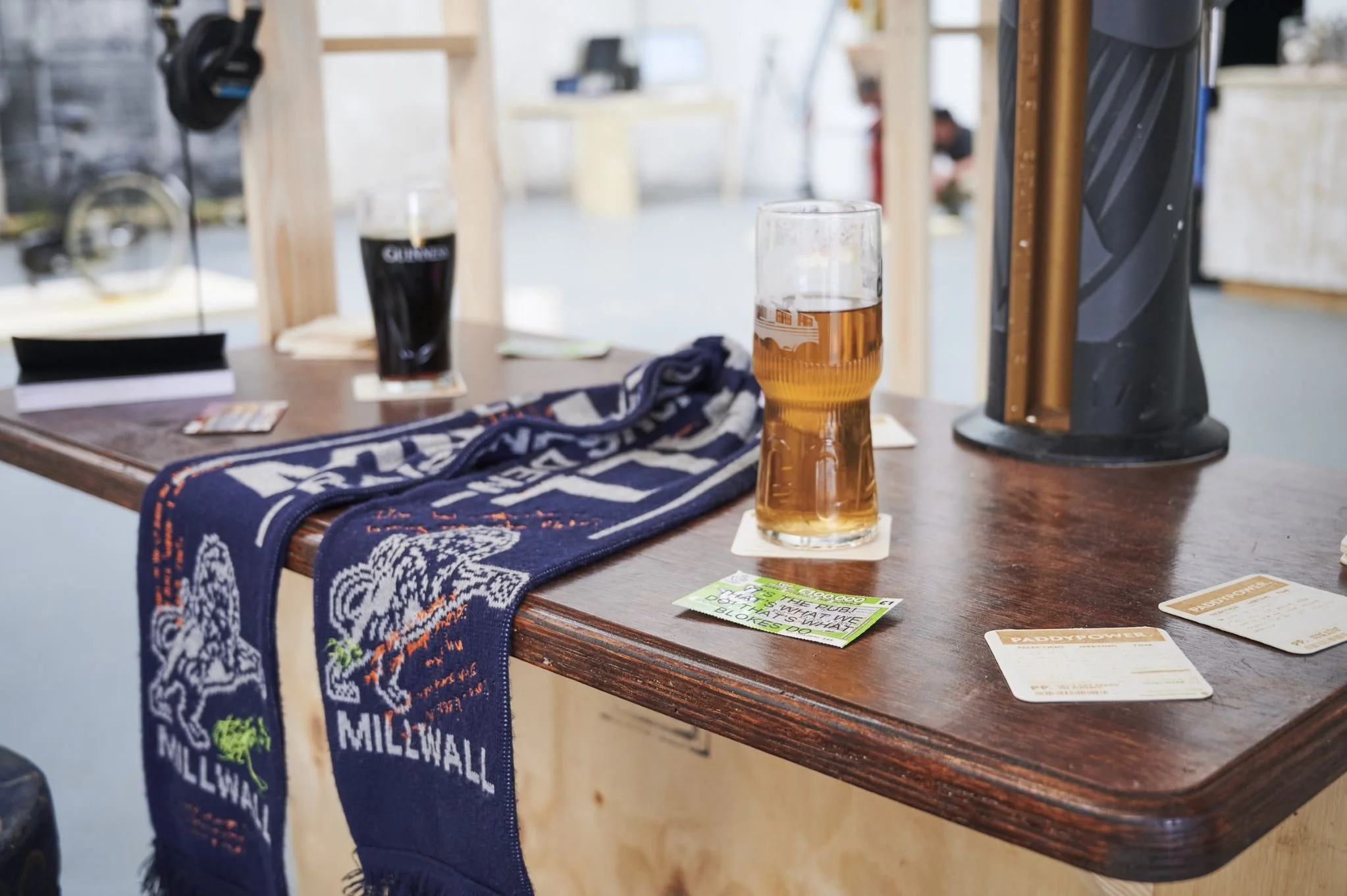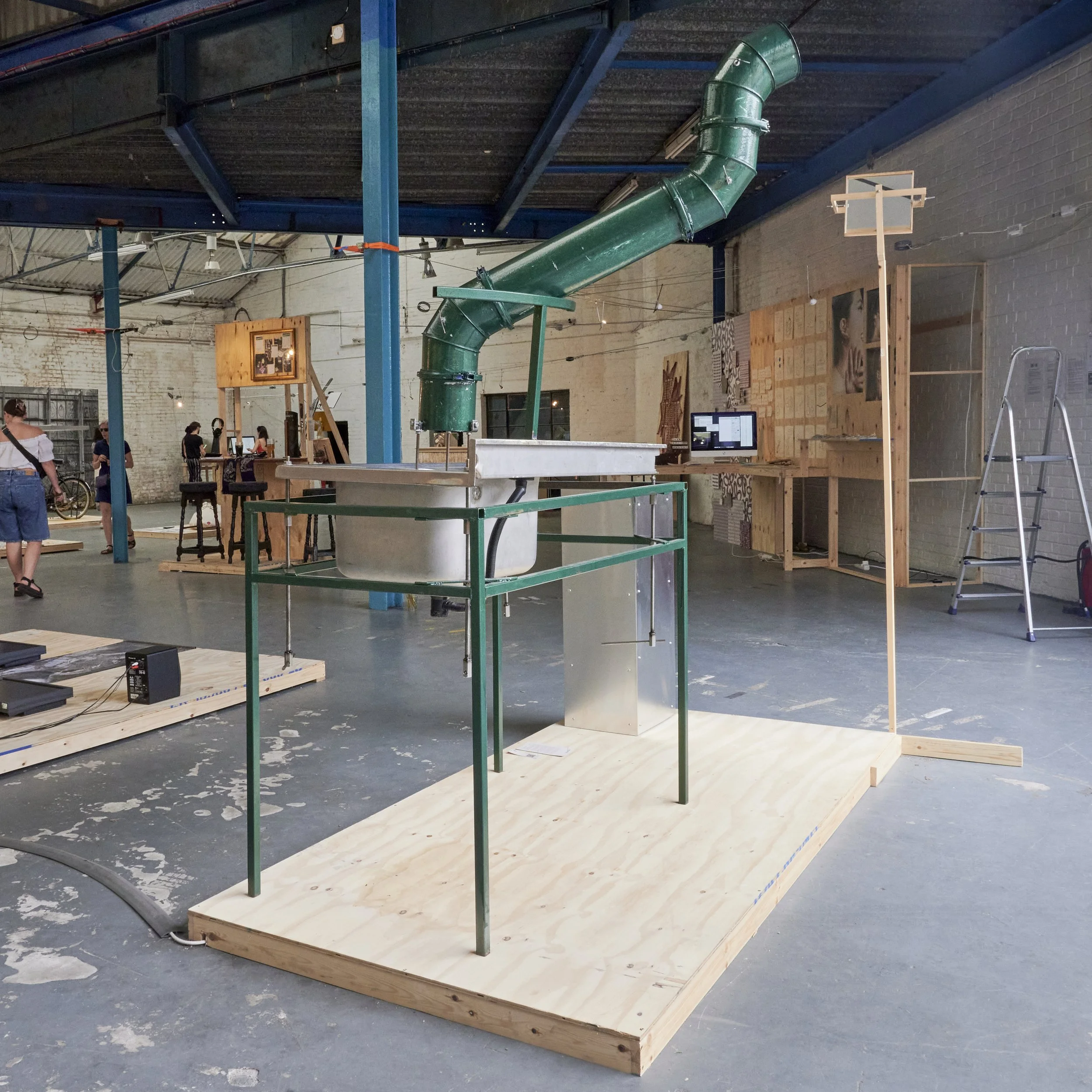TF/22-23
Projects supported during research and development in 2022-23.
James King
Mycorrhiza ‘On Dead Literature’ is a project based around the natural abilities of mushrooms to recycle dead matter. In particularly, our dead and unwanted materials. Through exploring different forms of dead literature, I want to show mushrooms natural agency to create unique forms and the creation of the death prints as a marking point of recycling and new life. I want to view this project as a symbiotic interaction rather than a process or system to use for my self-interest. This led to a collaboration with Oxfam in Greenwich where I took their ‘unsellable’ books, converted them into Oyster mushrooms and explored how we create ethical disposals of matter in our society. Pulping is profane but mycelium is marvellous.
My name is James, and I became heavily obsessed with mushrooms in the lead up to my final year project. My practice involves creative writing, critical thinking and consist of a heavily environmental standout within design. I enjoy production using waste materials often foraged from bins around my home. I hope to explore in the future the relationship design has within environmental regeneration.
The Tom Fund allowed me to build a ‘Martha Tent’, a homemade style mushroom fruiting chamber. This created the specific conditions for the books to grow and unlocked scalability within my project. It also allowed me to study mushroom cultivation at another level and gave me a broad understanding of mycology.
Ananya Dunn
Second Skins is a project concerned with challenging notions of humanness in order to better understand how we can live as a part of our environments rather than above them.
The human body, confined within the boundaries of skin and flesh, is a seemingly solitary creature. It becomes separate from its ecosystem, removed and distanced, negating any facts that it is actually more nonhuman than ‘human’.
My research instead looks to expand the boundaries of our skin and asks us to consider the way in which we relate to and with plant life, and therefore the wider systems we are both a part of, to encourage the rebuilding of kinship between humans and nonhumans.
The living garment, or a second skin, facilitates an intimate encounter between two bodies, physically and visually weaving together the human landscape with a plant’s body.
The Tom Fund granted me the financial support to be able to purchase a greenhouse from which I was able to explore various methods of growing and ensure the right conditions for the plants. It was incredibly useful in the development of the garment and ultimately, elevated my research and learning.
Ell Lenton
My project focuses on the intricate relationship between material and social architecture within pubs, exploring these establishments as an essential social territory in British culture and examining their role in communities.
It considers the very fabric of pubs as witnesses and bearers of ephemeral moments unique to this social space, I use material and social interventions as experimental ways of communicating the complexities and nuances of the pub - both abject and beguiling.
The Tom Fund allowed me to explore more permanent ways of intervening within pubs, from printing onto beer mats to embroidering onto football scarves. It also gave me the means to gather more research and perspectives for my project by enabling me to facilitate a community writing session. I am really grateful for the way the Tom Fund accelerated my project and the effectiveness of my interventions.
Caleb Wyckoff-Smith
Kafka’s Daughter is a narrative told through a series of boxes containing objects, garments, illustrations, and a novelette. The project tells the story of a character, Lana Kammel, and her imagined telepathic connection with Czech author Franz Kafka. The viewer is invited to explore the boxes, which contain various artefacts both taken from and exterior to the fiction: Lana’s Dress, a recreation of Kafka’s “Odradek” from “the cares of a family man”, a copy of Gustav Janouch’s “Conversations with Kafka”, various design sketches and illustrations, and a hand-bound copy of “Kafka’s Daughter” itself.
With a grant from the Tom Fund, I was able to visit Prague in order to research different locations important to Kafka's life, as well as to draw important design inspiration and create illustrations from the city's streets, history, and museums.
Ke Bao
This work challenges grand narratives, employing "design discipline" to connect everyday life and sublime objects using natural materials. The project, situated at the intersection of public installations, furniture design, and social practice, captures the essence of moonlight using metal, wood, and mirrors. It invites participation, fostering inclusiveness and introspection, questioning the futility of certain efforts. By incorporating moonlight into design without digital interference, and adjusting the installation to reflect the moon into a daily-used sink, it blurs indoor and outdoor boundaries and prompts reflection on pursuit, waiting, and expectation. This work seeks to enable everyone to engage with transcendent matters, emphasizing that while we can "point to the moon", we can't touch it, highlighting the interplay of the tangible and intangible in our lives.
Iman Amjid
My project is all about approaching communities with creativity to strengthen their bonds with each other. I focused on using escapes for this, so my pieces are inspired by the escapes I collected from lots of different people and then I translated them into 3D immersive pieces. Instead of approaching a community highlighting an issue, I wanted to provide a space with my pieces that could facilitate conversation about why they have to escape in the first place, and what their ideal escape reflects about them. The aim is that this will deepen a communities understanding of each other as individuals, to learn more about what troubles them and how they could support each other. I may not be able to solve anyone's problems with my project, but I may be able to help give people a voice and a space to express it.
I hope to show that we can still use creative and surreal methods whilst helping and giving back to our communities. I used to battle between my love for aesthetically pleasing art and also the need to make my work address a real-life issue, so this project for me was a way to combine the two.
Using the Tom Fund award I was able to make a series of interactive escape objects with durable materials, and to a high quality.
Cam Harris
Difference and repetition, by Deleuze 1968, recognizes difference as a mode of exploring fixed identities/ categorical expressions that are otherwise produced through the representational nature of observation. Representation, of which, provides fixed-states or meanings that recognize a pre-delineation, or a prior experience as a representative truth. The problem with such modes of thinking, and learning, is we fail to recognize the shifting flows of state that happen in all things. States of which are constantly shifting and flowing in flux with its exterior.
I explore this flux through real time pH fluctuations within two self-contained ecosystems that I recognise as ‘Black Box’ mediators. Sourced from two sites which I explore through their unknowable natures, embracing possibility through contingency, and as a point of contact: a site of confluence. Through this, the observer may start to decipher and tap into a method of perception that engages with ‘real-time’ observation, allowing one to view, and understand each site in correspondence with each ecosystem through its own induced material agency.
The Tom Fund provided this project with equipment necessary to explore avenues of research including bullet-time camera arrays, sampling equipment, fabrication costs and a Tascam for site-specific audio research.
Maya Tastet
This project is about toilets. Particularly the lack of toilets available for women in urban spaces. Currently, there is a significant disparity between the number of urinals for able-bodied men and the long queues for female toilets.
To tackle these problems, I am developing pee-friendly architectural garments for women. These wearables serve a dual purpose by functioning as both clothing and urban structures that facilitate navigating and urinating in the city.
The Tom Fund allowed me to experiment with different textiles and materials to create prototypes of garments. I played with inflatables, built small tent poles to create a skirt that would pop up into a toilet cubicle. I experienced a lot with ready-made clothing to slightly change their function into pee-friendly attires.
The collection consists of seven solutions, including practical designs and protest pieces intended to raise awareness.
All garments share a common feature: the color orange, symbolizing emergency and aims to draw attention. These shameless pieces challenge societal taboos around bodily functions and encourage greater care and consideration in the design of city infrastructure, specifically toilets.
Instagram: @maya.tastet.design









